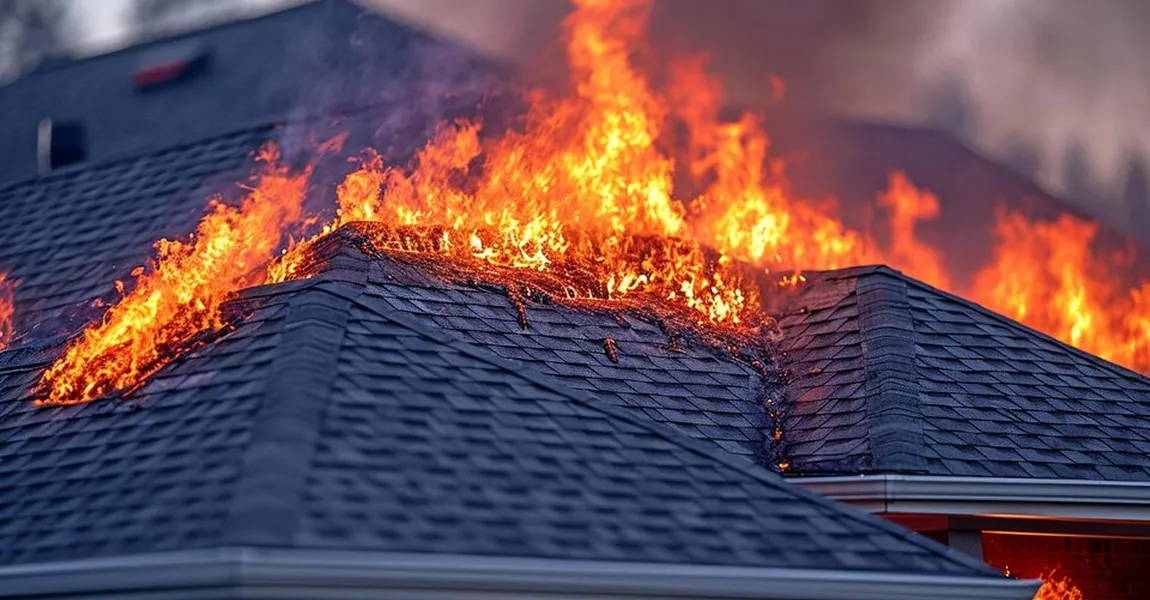If your roof has been damaged by a storm, high winds, or falling debris, you may be wondering if your homeowner’s insurance will cover the repairs or replacement. Many homeowners assume that filing a claim is a simple process, but in reality, insurance companies scrutinize every claim to determine if the damage is truly covered under your policy.
In North Carolina, where homes are frequently exposed to hurricanes, hailstorms, and heavy rain, understanding the claims process can mean the difference between having your roof repaired with little out-of-pocket cost or paying for it entirely on your own.
This guide will walk you through the insurance claims process for roof damage, explaining how to document damage, work with adjusters, and maximize your chances of getting insurance to pay for your roof repairs.
Understand What Your Insurance Policy Covers
Before filing a claim, you need to know what type of roof damage your policy covers. Not all homeowners’ insurance policies offer the same protection, and coverage can vary depending on the age of your roof, the cause of damage, and your specific policy terms.
What Insurance Typically Covers:
- Storm damage: High winds, hail, and falling trees.
- Water damage from storms: If wind-driven rain causes leaks or structural damage.
- Fire damage: If a fire damages the roof or causes partial destruction.
What Insurance May Not Cover:
- Wear and tear: Normal aging of the roof is usually not covered.
- Neglect or lack of maintenance: If your roof was already in poor condition before the damage occurred, the insurance company may deny your claim.
- Gradual leaks: Long-term leaks that weren’t caused by a sudden event may not be eligible for coverage.
North Carolina Insight:
Homeowners in coastal areas like Wilmington and the Outer Banks should review their policies carefully, as some insurers require separate windstorm or hurricane coverage. If you live in a high-risk zone, make sure you have the right protection before storm season arrives.
Document the Damage Immediately
One of the most important steps in getting your insurance claim approved is providing clear and detailed evidence of the damage. The more proof you have, the easier it will be to show the insurance adjuster that your roof needs repairs or replacement.
How to Properly Document Roof Damage:
- Take photos and videos immediately after the storm or damage occurs. Capture close-up images of missing shingles, cracks, leaks, and any visible structural issues.
- Check your attic for leaks or water stains, as these can indicate hidden damage.
- Look for scattered shingles or roofing debris in your yard to show the extent of the impact.
- If possible, compare with previous roof photos to highlight the before-and-after difference.
North Carolina Insight:
After a major storm, roofing contractors in Raleigh and Charlotte often get flooded with calls. If your home is affected, document the damage as soon as possible and schedule an inspection before demand spikes.
Contact a Roofing Contractor for an Inspection
While insurance companies send their own adjusters, it’s always a good idea to get a professional roofing contractor to inspect the damage first. A trusted roofer can give you an independent assessment, which can help prevent the insurance company from underestimating the cost of repairs.
Why a Professional Roofing Inspection Matters:
- Provides an expert opinion on whether your roof needs repairs or full replacement.
- Identifies hidden damage that an insurance adjuster might overlook.
- Ensures the damage is documented properly with a written report that supports your claim.
North Carolina Insight:
Many homeowners in Fayetteville and Greensboro have found that insurance adjusters often approve smaller repair amounts unless a licensed contractor provides detailed documentation. Having an expert report strengthens your claim and ensures you receive the full payout you deserve.
File Your Insurance Claim the Right Way
Once you’ve gathered documentation and an inspection report, it’s time to file your insurance claim. Many claims get delayed or denied simply because of incomplete paperwork or missing details.
Steps to File a Roof Damage Insurance Claim:
- Call your insurance company as soon as possible to report the damage.
- Provide photos, inspection reports, and any other documentation they request.
- Schedule an adjuster’s inspection—the insurance company will send someone to assess the damage.
- Get an estimate from a professional roofing contractor to compare with the adjuster’s assessment.
- Negotiate if necessary—if the insurance company offers less than the required amount, you have the right to dispute the claim.
North Carolina Insight:
In areas like Winston-Salem, homeowners who file claims promptly after a storm often have a better chance of getting their claims approved before insurance companies tighten restrictions due to a high volume of claims.
Know Your Deductible and Policy Limits
Even if your claim is approved, you’ll still be responsible for paying your deductible before insurance covers the remaining cost.
Things to Check in Your Policy:
- Your deductible amount—if it’s too high, you might end up paying a large portion of the repair costs out of pocket.
- Whether depreciation applies—some policies pay for the actual cash value (ACV) of your roof rather than the full replacement cost. This means you may not get the full amount needed to cover a new roof.
- Exclusions or special clauses—some insurance policies have specific limitations on what type of storm damage is covered.
North Carolina Insight:
In hurricane-prone areas like New Bern, some insurance companies offer higher deductibles for wind and storm damage. Make sure you understand what your policy covers before the storm season arrives.
Work With a Roofing Contractor Who Understands Insurance Claims
Not all roofing contractors have experience handling insurance claims for roof damage, so choosing the right company is essential. A reputable contractor will work with your insurance company directly, helping you navigate the process and ensure you receive the full coverage you’re entitled to.
How the Right Roofing Contractor Can Help:
- Assists with paperwork and claim documentation.
- Meets with the insurance adjuster to make sure no damage is overlooked.
- Provides a detailed estimate to compare with the insurance payout.
- Ensures the roof repair or replacement meets all building code requirements.
North Carolina Insight:
Many homeowners in Durham and High Point have found that working with local roofing experts who understand North Carolina’s specific weather challenges makes the claims process smoother and more successful.
How to Maximize Your Insurance Coverage
Filing a roof damage insurance claim can feel overwhelming, but being prepared makes all the difference. By documenting the damage, working with a professional roofer, and following the proper claim process, you increase your chances of getting full insurance coverage for roof damage.
Key Takeaways:
- Review your insurance policy to understand what’s covered and what’s not.
- Document roof damage with clear photos, videos, and inspection reports.
- Hire a trusted roofing contractor to assess the damage before the insurance adjuster arrives.
- File your claim promptly and provide all required documentation.
- Know your deductible and policy limits before agreeing to a settlement.
If you need help with insurance claims for roof damage, contact Citadel Contracting today. We’ll guide you through the process and help you get the compensation you deserve.










